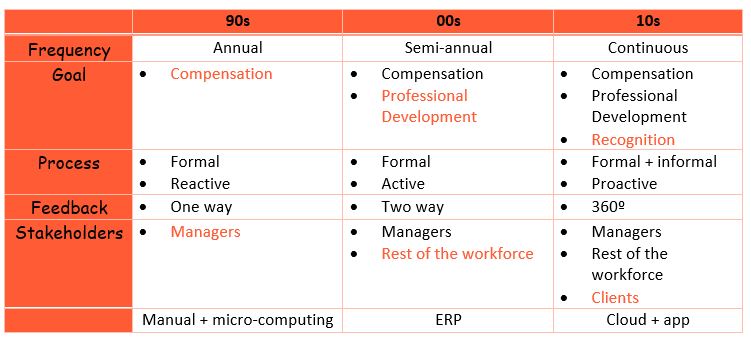In the times before COVID-19—which has completely flooded and absorbed our attention over the last three months—precisely in those contemporary times, we had breakfast almost daily over articles from magazines, books, videos, posts that discussed the organizational change taking place due to digitization and the influx of Millennials and Generation Z (those born after 1995) into the enterprise—this latest generation has begun to join the working world. Some experts even venture to talk about the Centennials to refer to that cohort of those born between 2000 and 2010 in the midst of a downturn, which has made them more pragmatic, realistic, and unable to imagine their lives without connecting to the internet or accessing their mobile. Be wowed by the content revealed in a recent study published by McCann stating that 53% of these youths would rather lose their sense of smell than their access to the network.
There is much said and written about them, and part of it must be true, because their influx into the working world is calling for some of the old-fashioned HR policies to be cross-examined as they are becoming invalid. In my opinion, this is exactly what is happening with one of the most important management tools like the Performance Management System (PMS) used for drawing out the best in people.
Evolution of the PMS
Throughout its history, as conditions changed, organizations adapted the model and modified the frequency, the goals pursued, their stated purposes of use, the implementation process, feedback mechanisms, the process stakeholders, and the technology itself.

As we can see in the figure above, the periodic annual or semi-annual appraisal has been definitively abandoned to shift towards a continuous, instant recognition model, where the goal is no longer merely compensation, but also professional development and recognition. The process is no longer reactive and formal, but more proactive and informal; it also ceases to be one-way as it was in the 90s and becomes a 360-degree process. Similarly, the main stakeholder is no longer just the director or manager but also co-workers, peers and customers, and technologically the manual and micro-computing based process became integrated into ERP systems (Enterprise Resource Planning) to now move over to the cloud and to apps.
Current trends
Even though both General Electric and Microsoft, as well as many other companies, have backtracked on the application of PMS, most companies do have a traditional annual performance assessment model in place.
Currently, as we can see in the figure below, we are heading towards a comprehensive talent management model that uses the PMS as one of the fundamental drivers for implementing the strategy and shaping the culture.
Moreover, the implementation process puts the focus on improving engagement and tends to integrate the hard and soft goals into the model depending on the strategy that the organization has set out. On how the future PMS will be applied, it will blend together manager skills with establishing metrics, defining a clear and agile process adapted to the new times.
Tips for improvement
Let me, dear reader, indulge in my humblest consultant’s prerogative and offer you a series of tips for improving your model. It seems clear that we are being forced to adapt people management policies to the times we are living in, so in this sense, there are six changes that strike me as highly recommendable for improving the PMS.
- First, companies are doing away with both “classification” and using the well-known Gaussian Bell, which said goodbye to those professionals—about 20 percent—who got the lowest scores each year. For many of these companies as well as the consultancies, who based much of their management philosophy on the “up or out” policy, this model has not been yielding results because many of the new professionals do not want the promotion awards given to the best and also because many of these companies can no longer offer the attractive and rewarding prize of becoming a partner as before.
- Second, annual reviews are being replaced by more frequent quarterly reviews, sometimes monthly or even weekly ones. In this direction, and to cite just one example, the consultancy, Deloitte declares that their new system seeks “speed and agility, for constant learning”. The employees at this consultancy sit once a week with their “team leaders” to get feedback on their work and the project.
- Bonus review and compensation pay is being separated from performance appraisal. This is essential, because merging the annual review with the bonus allocation makes people forget about the feedback and the really important thing about the model that is about “helping the person change to keep on improving”. Besides, the interview steers towards and becomes complicated with bonus Oh, and by the way, the power of compensation is also passing down into the hands of middle management and done periodically instead of annually in smaller amounts and given out in a non-predetermined time period, as merit-based annual increases have been shown to be less effective since too much time passes before they are recognized. In this light, for example, Patagonia has eliminated annual increases for its knowledge workers and adjusts wages for each worker more often by taking into account market changes.
- Fourth, the model tends to compare people’s performance against themselves, but not with their peers. In a interpersonal interaction system like in business, it is very difficult to be objective (remember what I typically say in these cases, “objective comes from object and subjective from subject”, so one can only be really objective with objects, while with subjects, one is always unavoidably subjective) and comparing one to the other can be detrimental for the organization’s health.
- Recognition of achievements and efforts using strokes ,which are not always material, is an highly appreciated aspect that is constantly in demand throughout the working life of new young professionals who are accustomed to their parents and family members giving them continuous feedback, as well as their opinion being taken into account ever since the cradle. But this recognition must come, not only from their bosses, but also from their colleagues. Gerald H. Graham, a professor at Wichita University pointed out that the most powerful motivator was personalized, instant recognition. It is proven that simply making the employee participate is one of the most powerful pillars of motivation and has a decisive impact on productivity and results. But don’t worry, because digitization is making it easy for fantastic tools to surface that facilitate these solutions online and quickly. Just to give an example of this, the Spanish start-up Guudjob is a unique employee evaluation platform—whether for values, skills or behaviours—that uses recognition to contribute to raising productivity and talent engagement through a real-time feedback methodology and tool, and offers meaningful data management for continuously appraising people’s performance and making predictive insights.
- Support the model in the technology. I will not tell you about the great solutions from the main providers in the market, I will just stress that the use of technology tools improves the feedback instances and streamlines the performance management processes. We are heading towards “bimodal” technology solutions based on integrated talent management platforms in cloud mode and exponential technologies (digital apps, RRSS, analytics, mobility…), all in SaaS (Software as a Services) format.
In short, in the post COVID-19 world, we will have to incorporate aspects of distributed team management into the performance management of our human groups because working remotely and telematically in distributed teams will become more normal and common.






